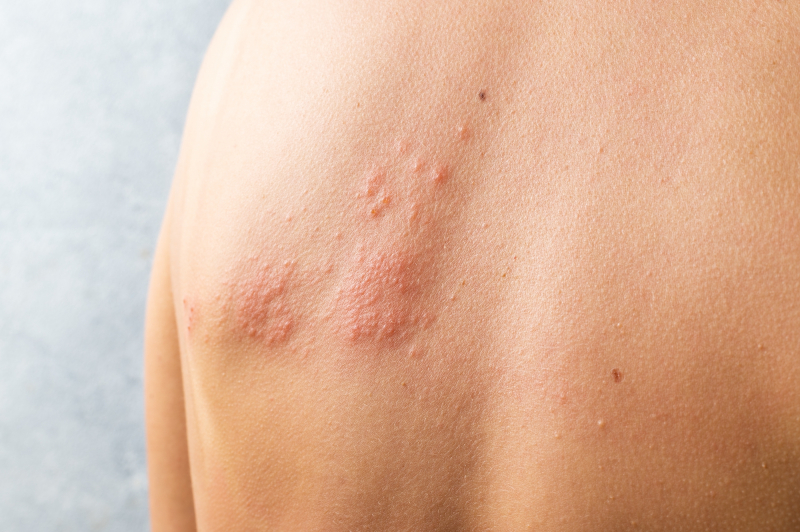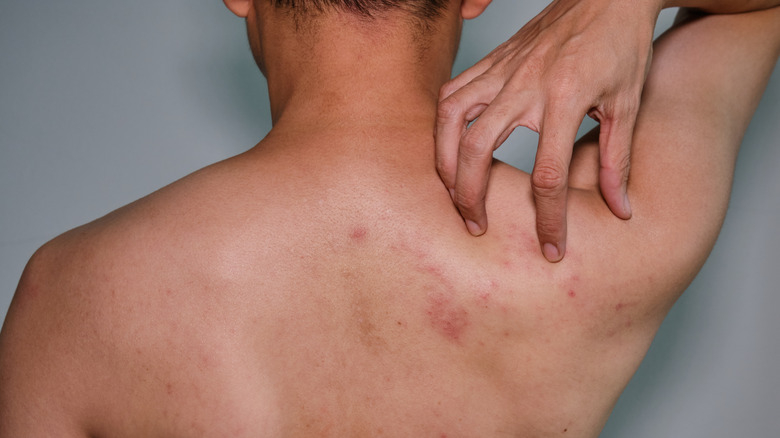Shingles

Herpes zoster, also called shingles, is a very painful disease caused by the same herpes virus that causes chickenpox (varicella-zoster virus). The varicella-zoster virus, like other herpes viruses, goes through an initial infectious stage (chickenpox), then a latent period. The virus then suddenly reactivates without prior notice. Shingles is the name of the virus after it has reactivated. Most people who have had chickenpox will later develop shingles—about 20% of people. Most susceptible to this virus's reactivation are those with compromised immune systems, such as those with HIV and those who are over 50.
Nerve tissue is where Herpes zoster thrives. Itching, numbness, tingling, or intense pain in the shape of a belt on the chest, back, or region around the nose and eyes signal the beginning of a shingles outbreak. Rarely, the nerves in the face or eyes can contract shingles. This may result in outbreaks around the tip of the nose, around the lips, on the face, neck, and scalp, as well as in and around the ear.
Almost typically, shingles outbreaks only affect one side of the body. A rash develops on the patch of skin near the irritated nerve in a few of days. As they grow, little blisters ooze fluid. They eventually split open and form crusty scabs. Scratching the blisters increases the risk of skin infection. Scarring could result from this and antibiotic therapy may be necessary.
Most of the time, shingles disappears within a few weeks, but occasionally, the excruciating pain can continue for months or even years. Post-herpetic neuralgia is the medical term for this ailment.












